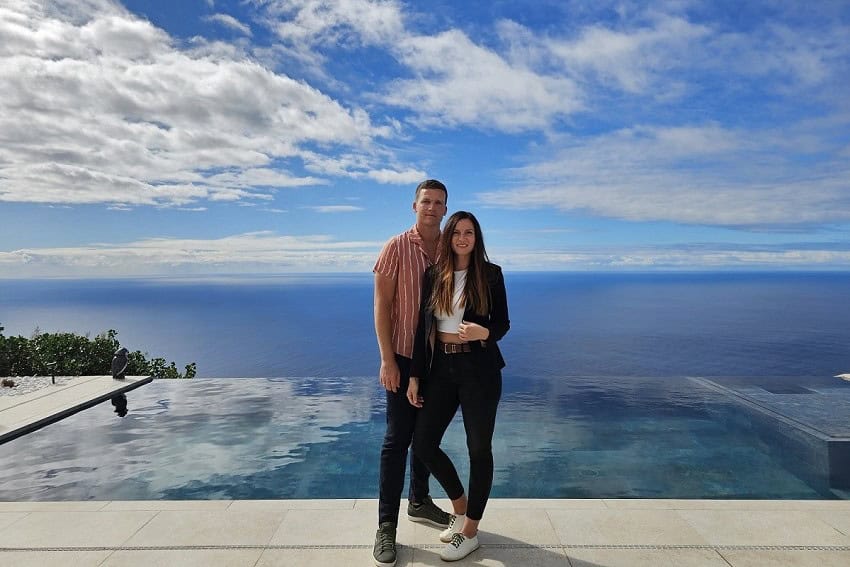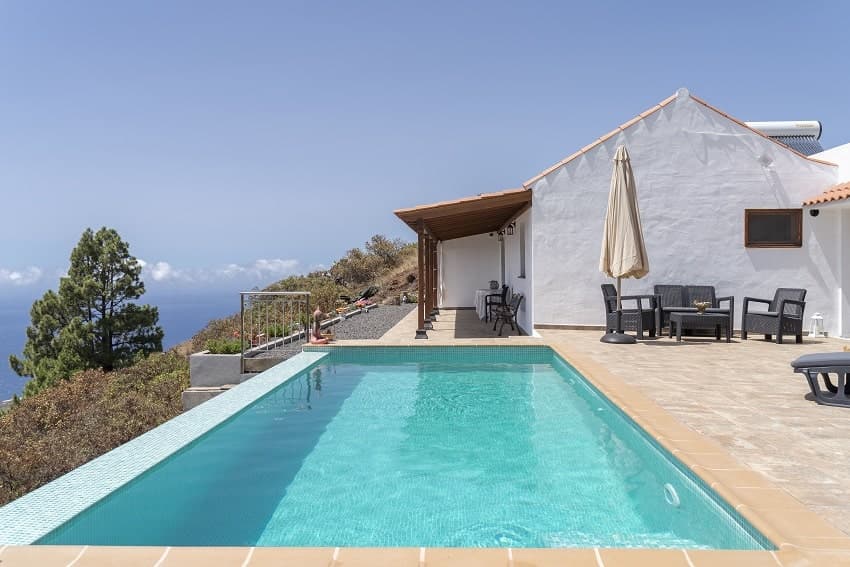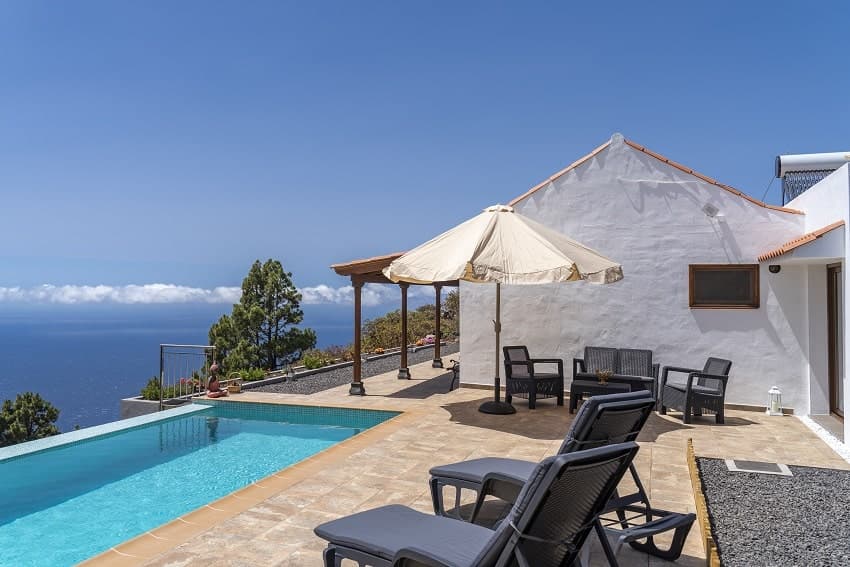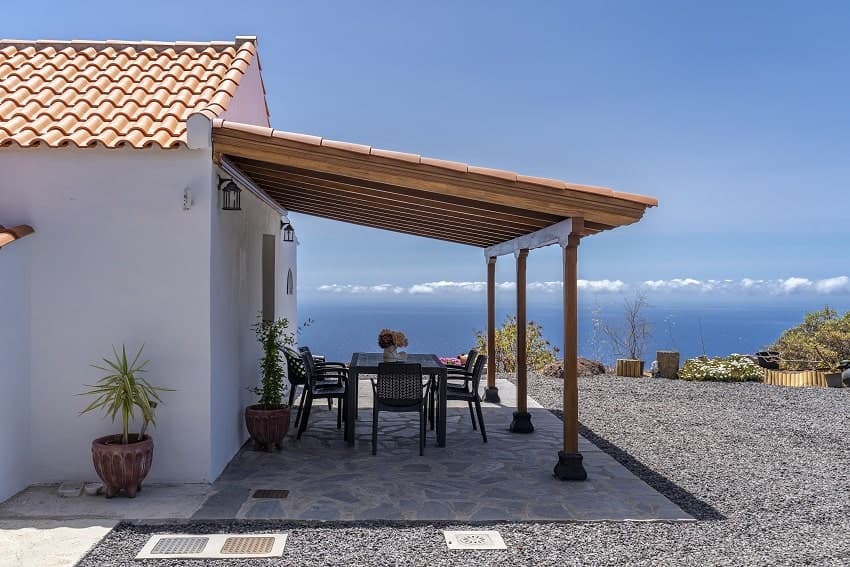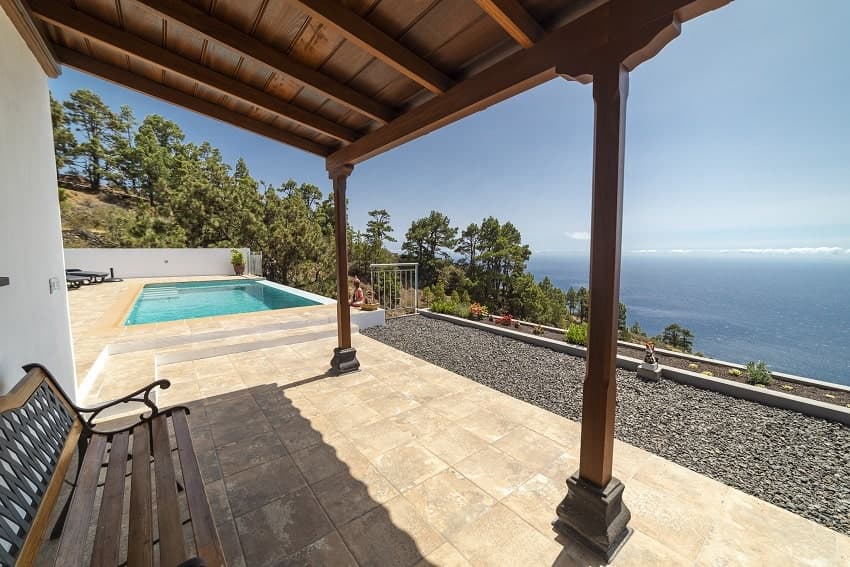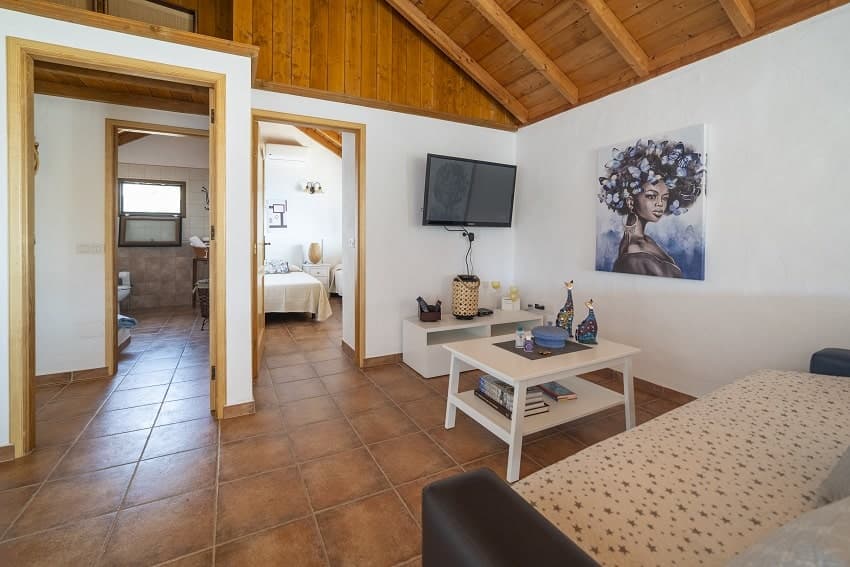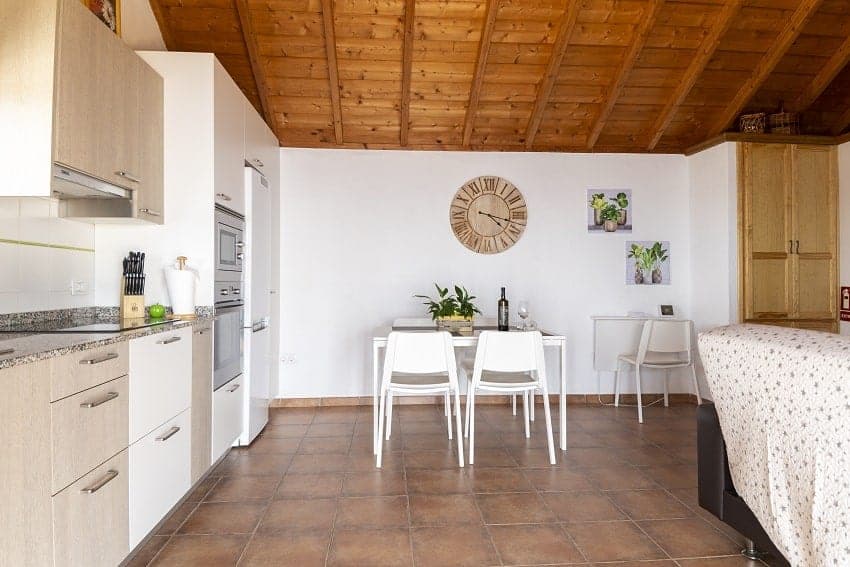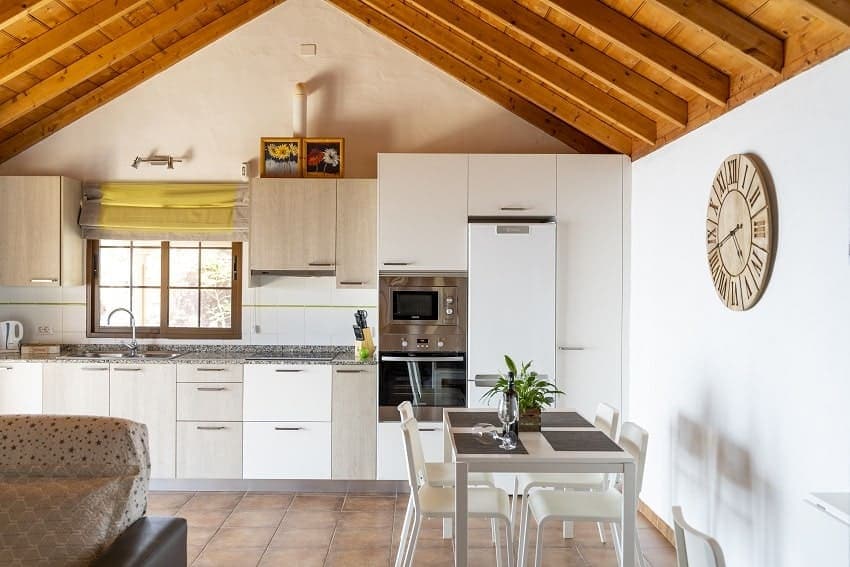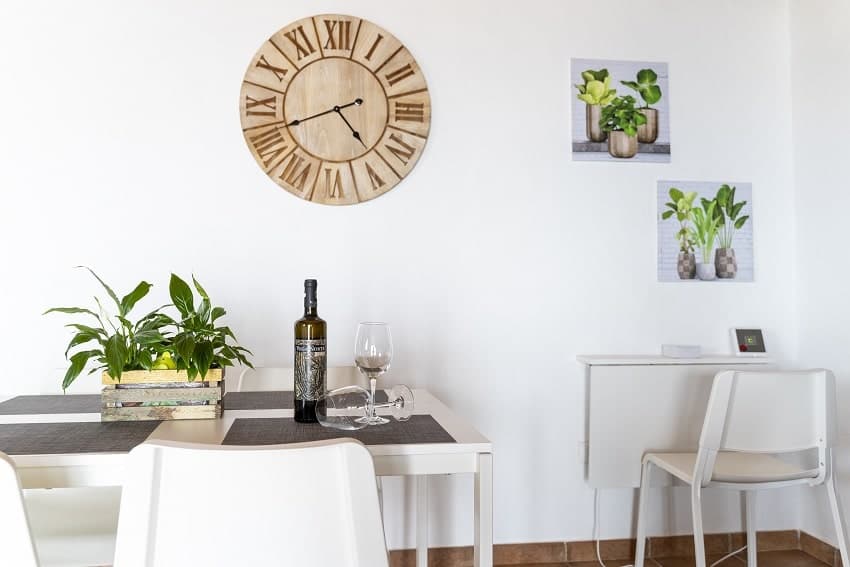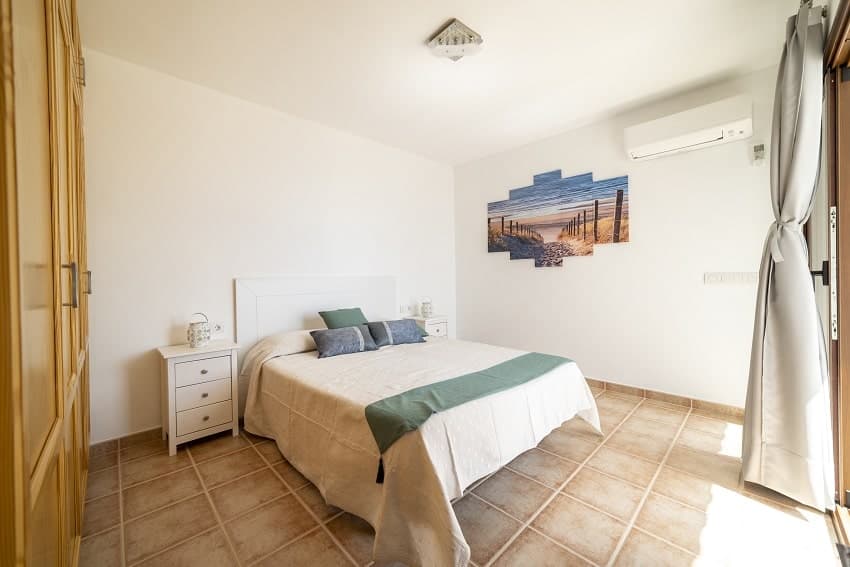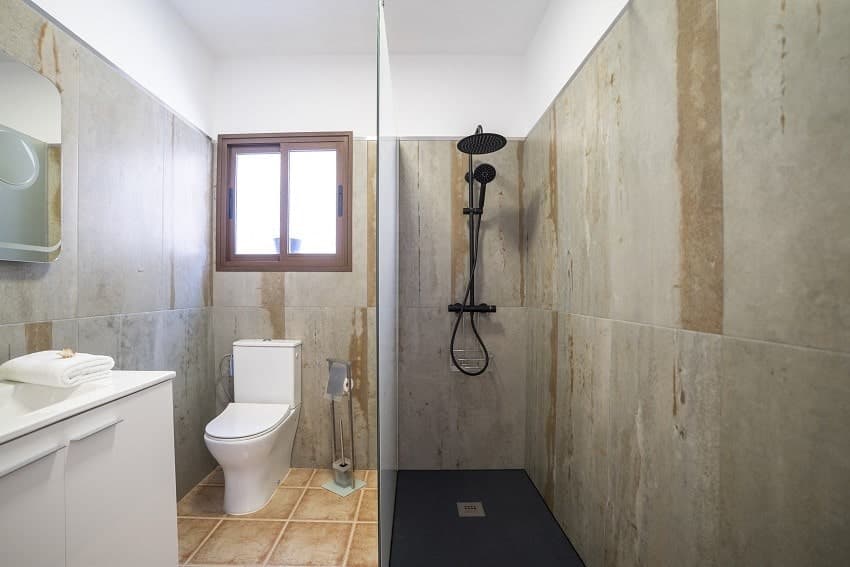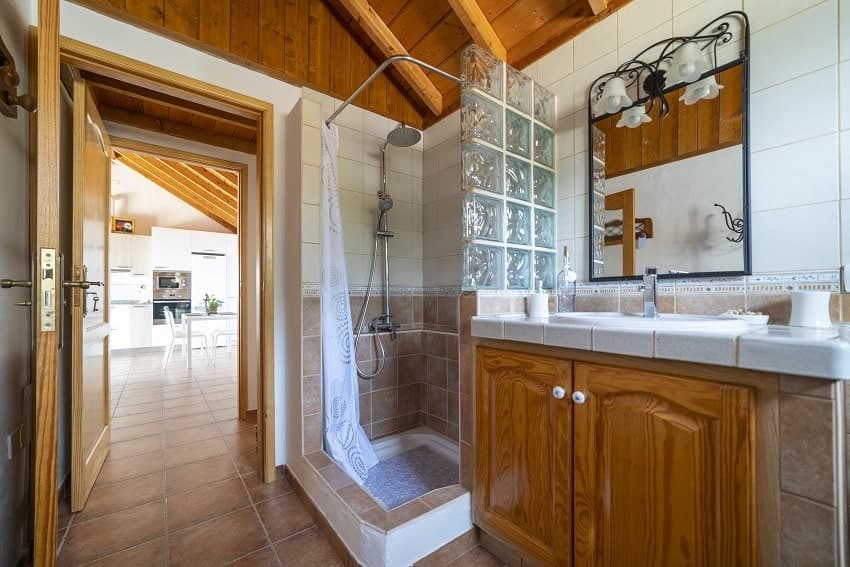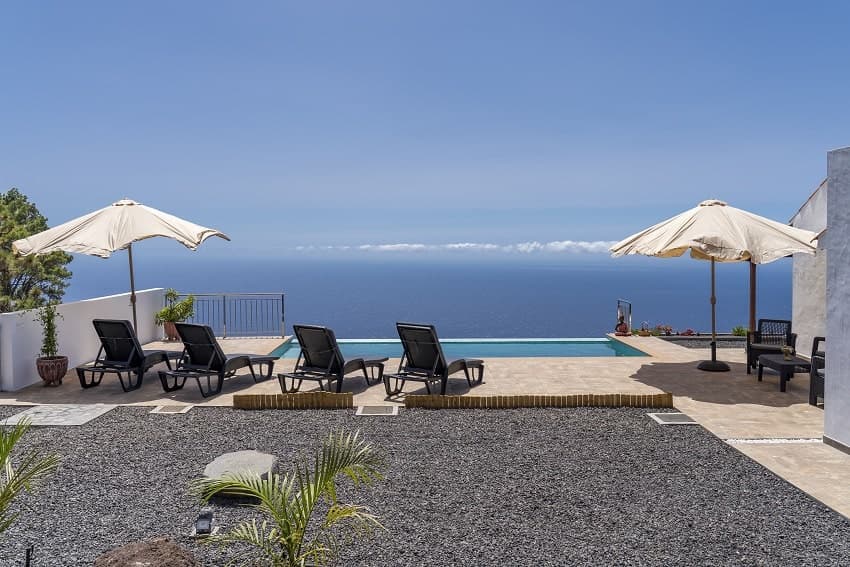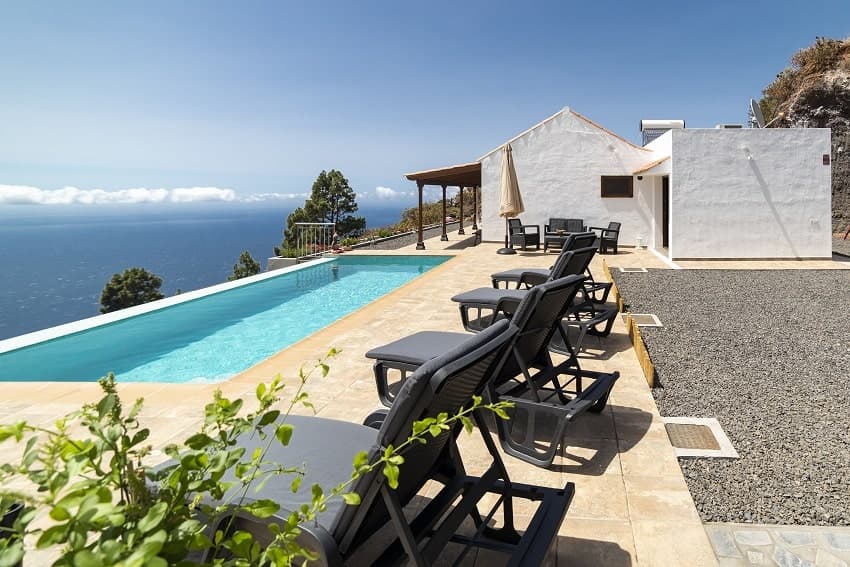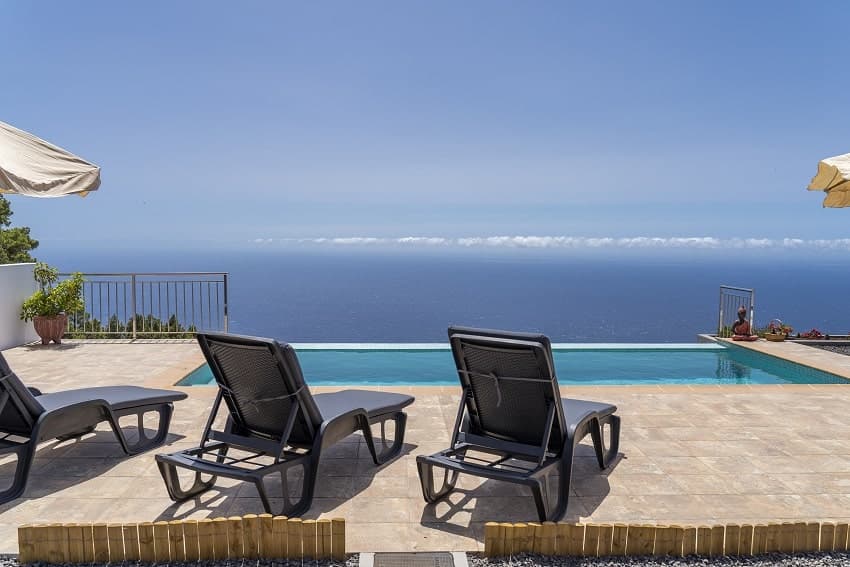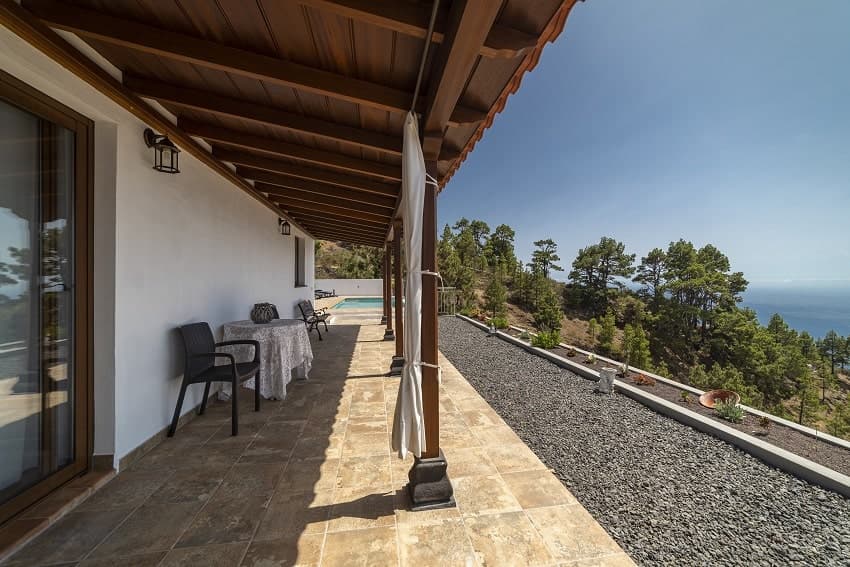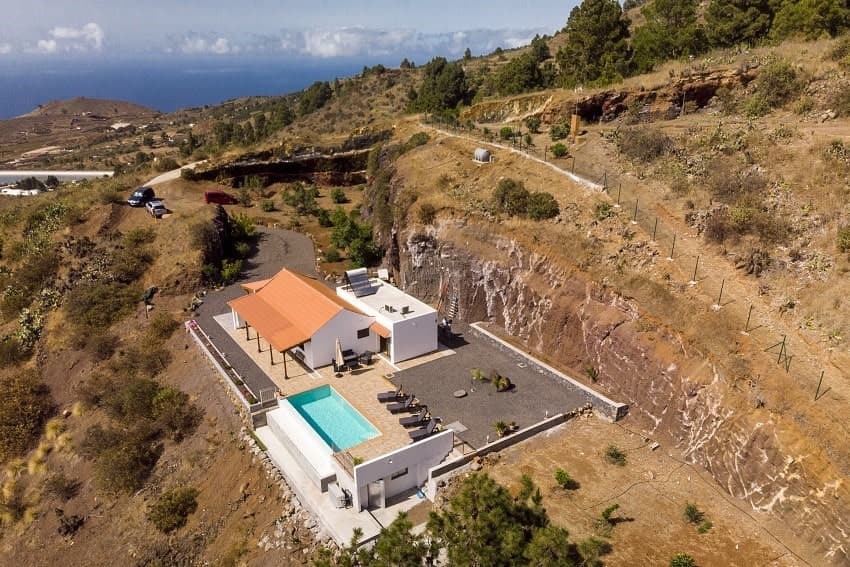Availability
Villa Atardecer
 1
1  2 2
2 2 





A cosy accommodation in a completely secluded location in Puntagorda, in the northwest of La Palma, with exceptional sea views and a heated infinity pool.
This charming accommodation on La Palma offers a perfect retreat, complete with a private pool and stunning ocean views.
Villa Atardecer is located at the end of a cul-de-sac, providing its guests with absolute tranquillity and relaxation in nature.
The open-plan living area has a comfortable sofa, a fully equipped kitchen, and a dining table. The window in the kitchen not only provides natural light but it is also a serving hatch that opens onto the covered terrace.
At approx. 95 m², the holiday home has two bedrooms, an en-suite bathroom, and a main bathroom. The air conditioning system (hot/cold) ensures a comfortable temperature in the bedrooms on cooler or hotter days.
You can enjoy a fantastic view of the ocean in the outdoor and indoor areas. Therefore, you can soak up the holiday mood not only by the pool but also while cooking.
The highlight of the outdoor area is certainly the impressive, heated infinity pool, which allows for year-round bathing. There are also plenty of seating and lounging options, as well as an outdoor shower.
Nestled in the heart of nature, Villa Atardecer enjoys a secluded location far from artificial lights. As a result, it offers the perfect setting for stargazing.
Moreover, guests staying at Villa Atardecer can easily explore the charming surroundings of Puntagorda. From scenic viewpoints and peaceful walking trails to local markets, the area offers plenty to discover. Read more about things to do in Puntagorda here.
Facilities
- 1 Bathroom
- 1 Bathroom En-Suite
- 1 Double Bed 150x200
- 1 Outdoor Shower
- 2 Single Beds 90x200
- Air Condition Cold / Warm
- Alarm System
- Baby Cot
- Bed Linen & Towels are Provided
- Chill-Out Area
- Coffee Maker
- Covered Terrace
- Dishwasher
- Dryer
- Electric Kettle
- Espresso Machine
- Fridge / Freezer
- Hair Dryer
- High Chair
- Internet - WiFi
- Iron
- Ironing Board
- Juicer
- Living Room with Kitchen and Dining Room
- Microwave
- Mosquito Nets on the Windows
- Outdoor Furniture
- Oven
- Parking Space
- Pool Electrically Heated (extra charge)
- Private Swimming Pool
- Safe
- SAT-TV
- Shower
- Sofa Bed
- Stove
- Sun Umbrellas
- Sunbeds
- Terrace
- Toaster
- Washing Machine
- Writing Desk
Internet
Location and Distances
Medical help
Check In / Check Out
Payment / Cancellation
Additional information
We are sorry, there are no reviews yet for this accommodation.
La Palma
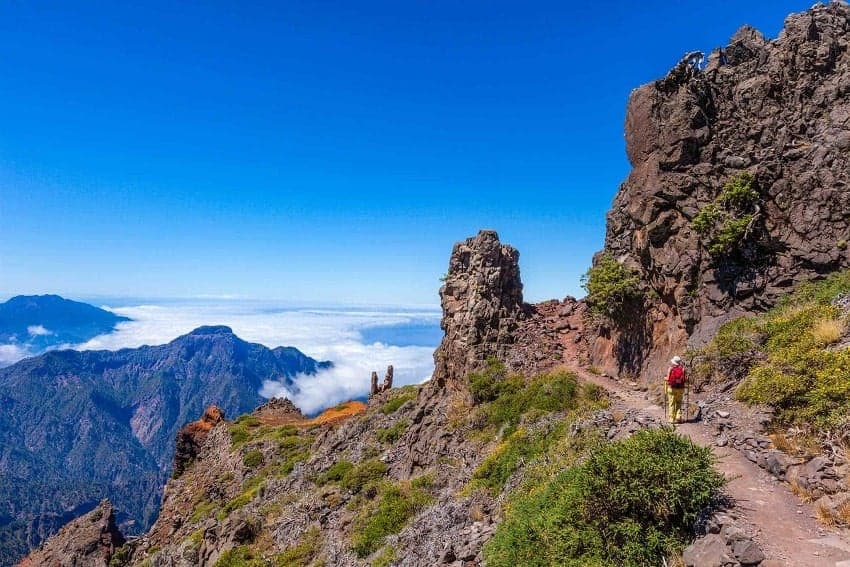
The island of La Palma offers breathtaking landscapes, remote beaches, imposing volcanoes, dense forests and incomparably starry skies.
With its 708 square kilometres, an elevation of 2.426m and its shape of a heart it is the most Western island of the Canary Island chain. Like every island in this archipelago, La Palma was created by volcanic activity. It is one of the youngest of the seven islands, dating back some 1.7 million years. The volcanic origin of La Palma is still clearly recognizable today, especially the southern part of the island with the dormant volcano Teneguía which last erupted in 1971, and offers interesting insights into its geological past.
The year-round mild climate with average temperatures between 18 and 27 degrees Celsius produce spring-summerlike weather as a result of the northeast trade winds.
This weather phenomenon is responsible for a pleasant subtropical climate and a rich green vegetation that prevails because of the humidity carried along in the trade winds. These moisture rich winds at certain times of the year also create a spectacular waterfall of clouds cascading down the central mountain faces and hence the nicknames Isla Verde – Green Island and Isla Bonita – Beautiful Island.
The unique geological structure of the island with its variety of vegetation zones and microclimates that are rarely found in the world on such a small area make this island a miniature universe. Each area of the island varies completely from another. In 1983 La Palma was declared a UNESCO biosphere reserve.
Another special feature of La Palma is the unique night sky. Due to its location in the Atlantic Ocean, sparse population, minimum light pollution and highest mountain peak Roque de los Muchachos 2.426m, the island was chosen as the location for one of the largest and modern observatories in the world.
The official population of the island is approximately 80,000 people. Traditional festivals such as the Bajada de la Virgen or Los Indianos carnival, famous far beyond the island’s borders, bear witness to the zest for life of the local people (Palmeros). Not only the geographical location, but also the numerous immigrants from Central and South America show a variety of Hispanic influences in island life, cuisine and cultural.
Read more...

